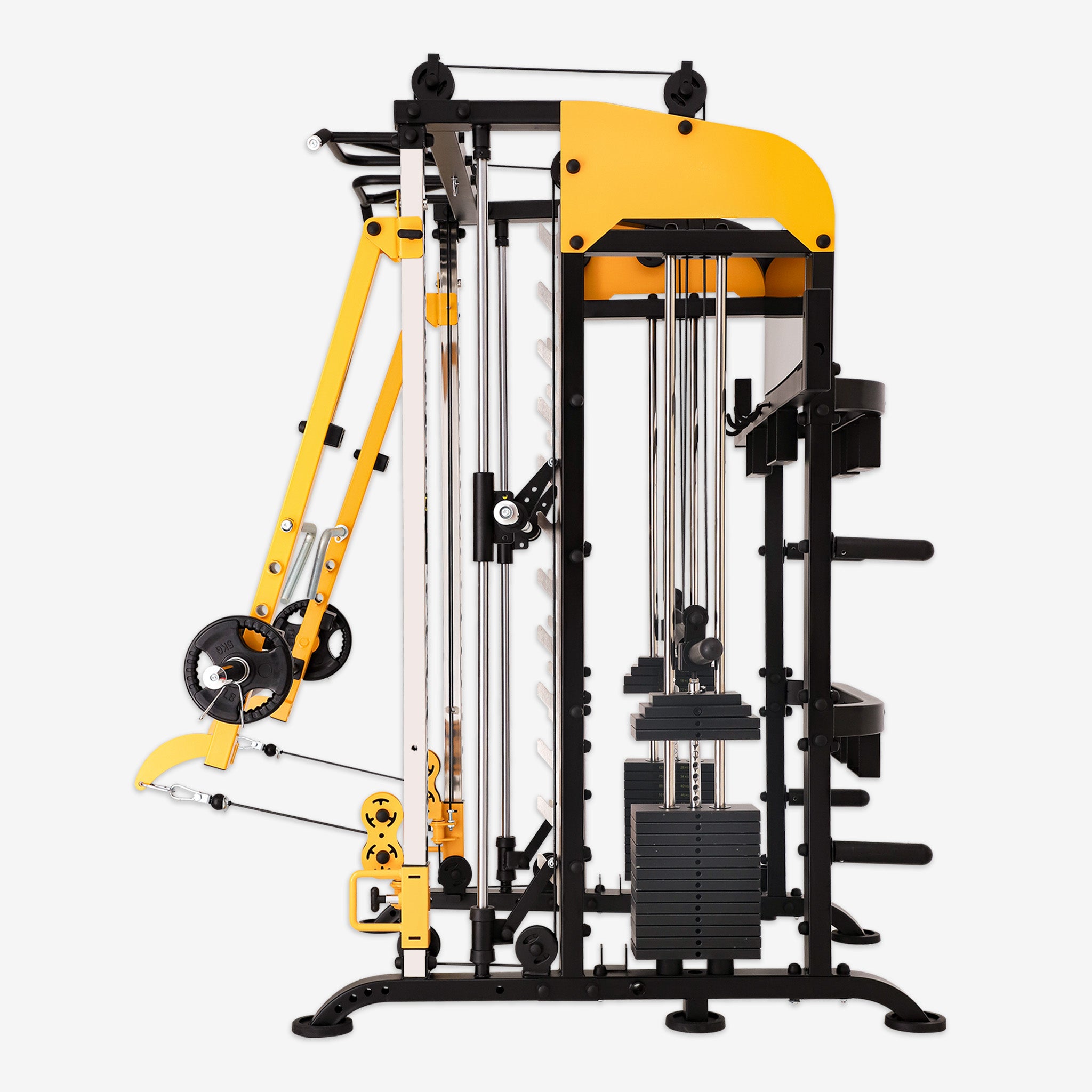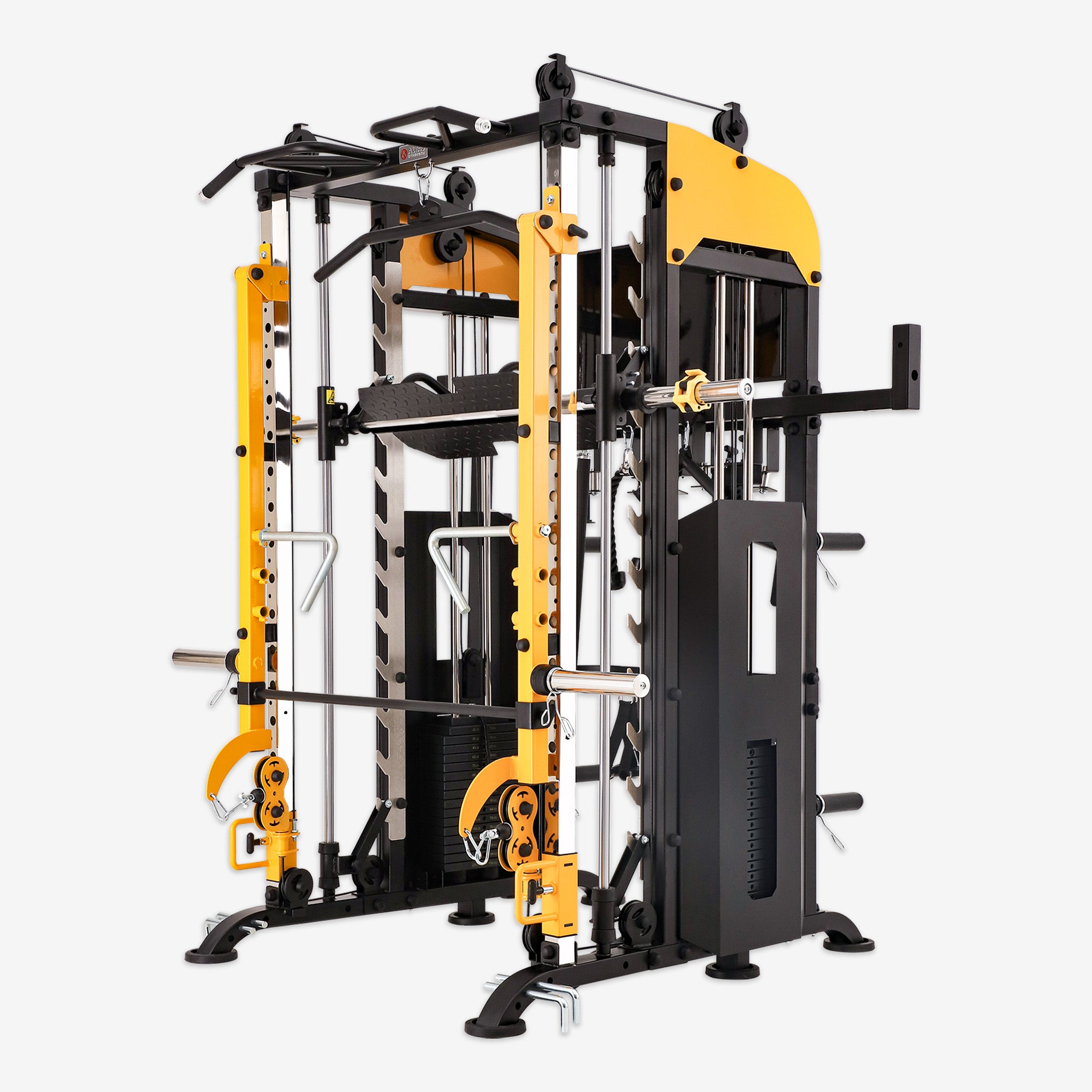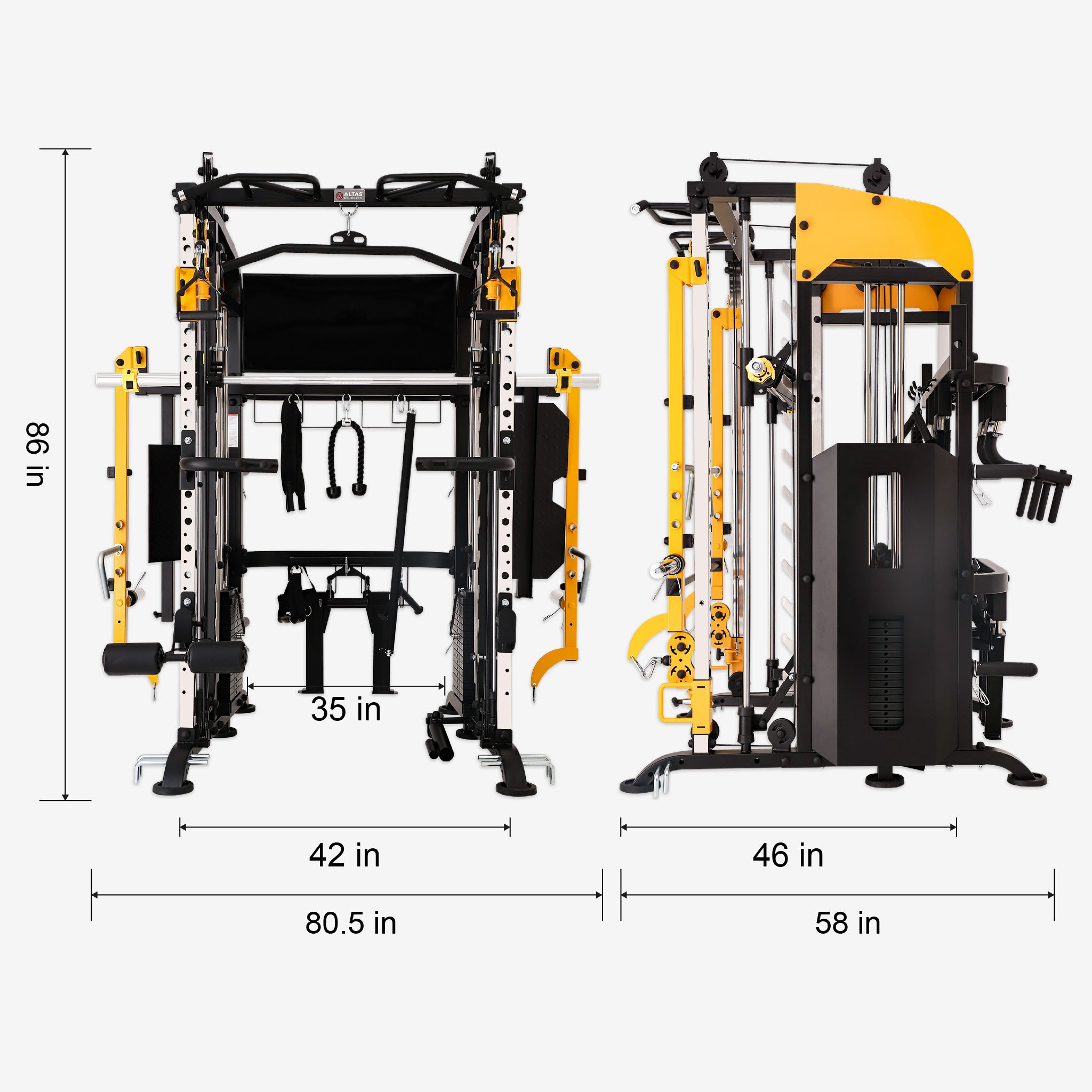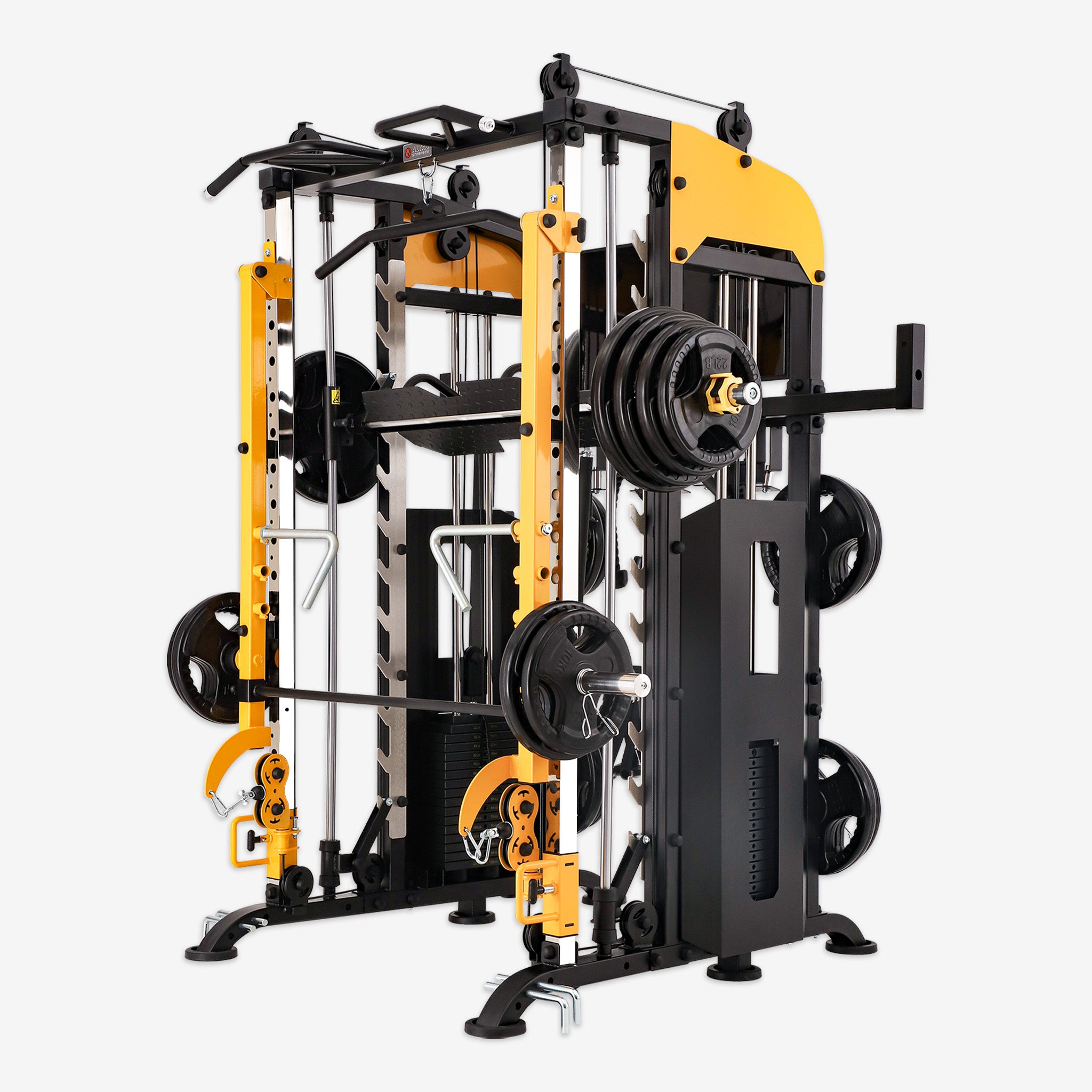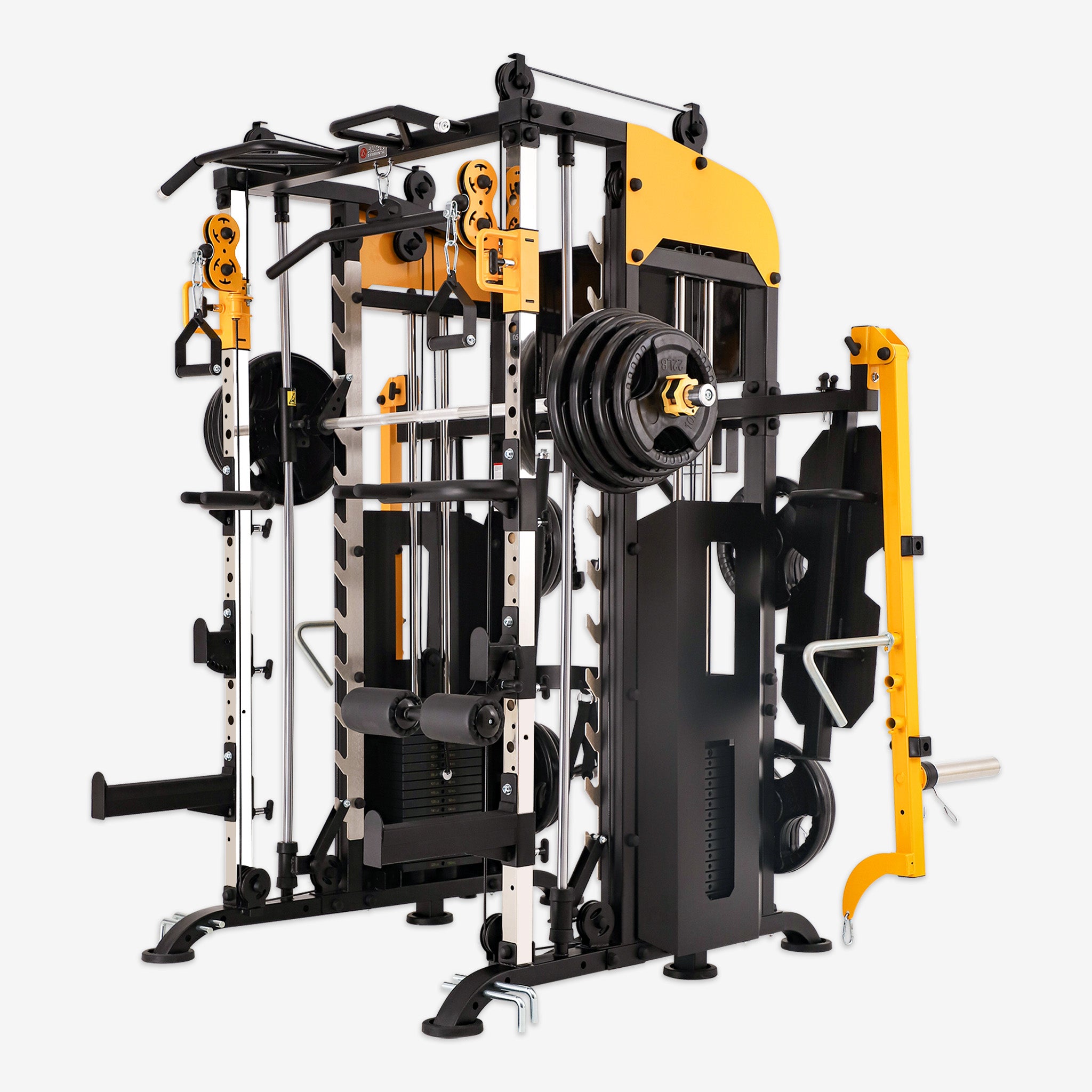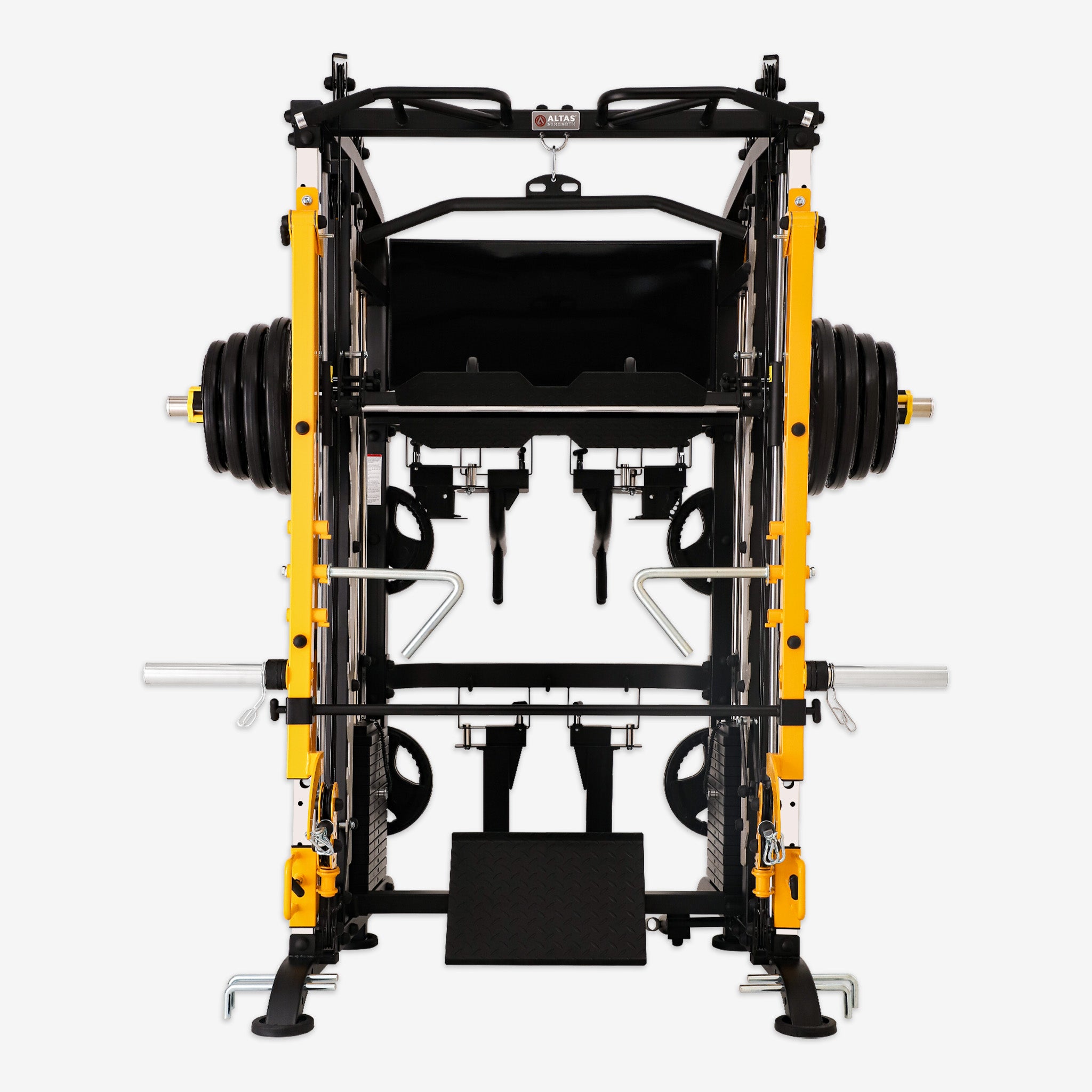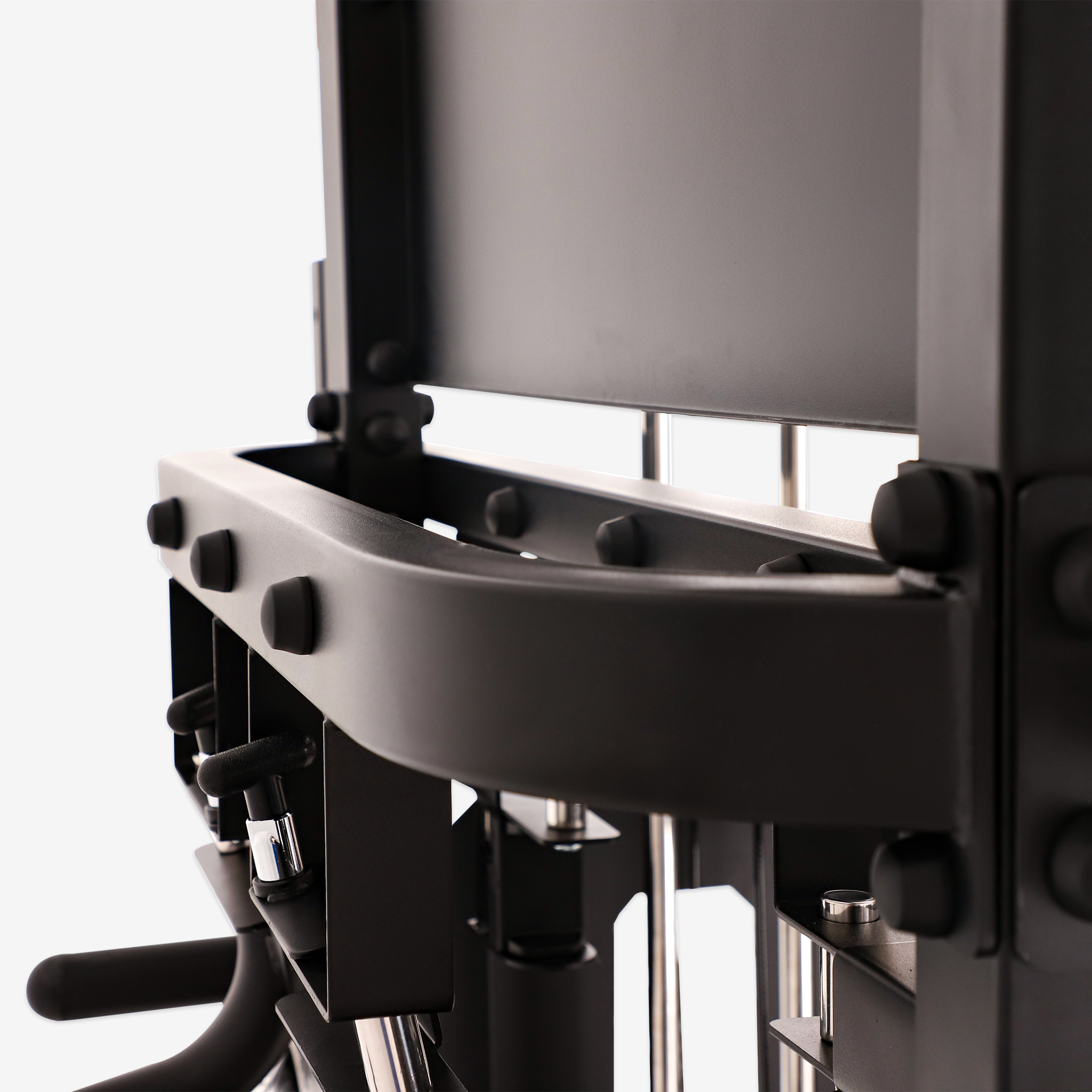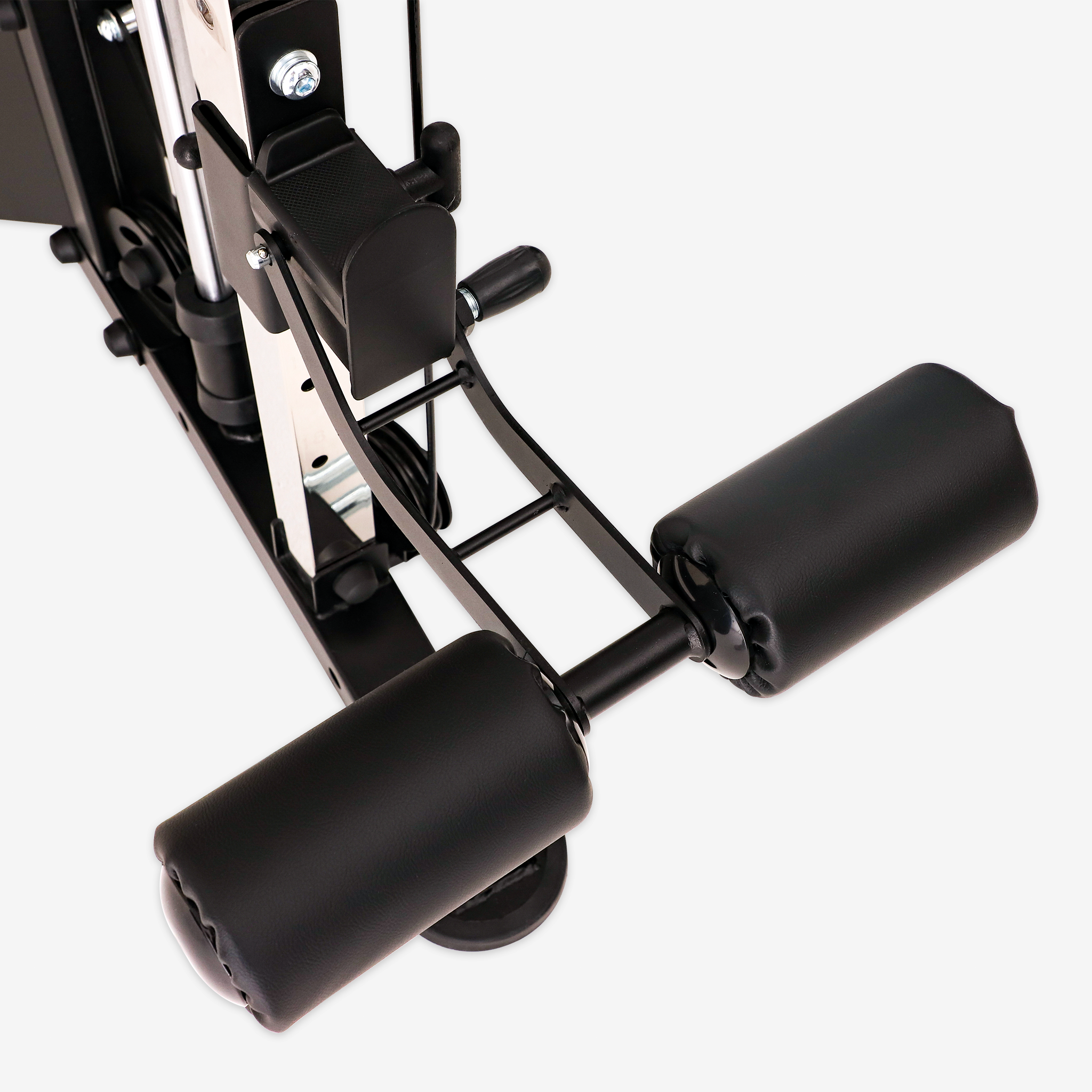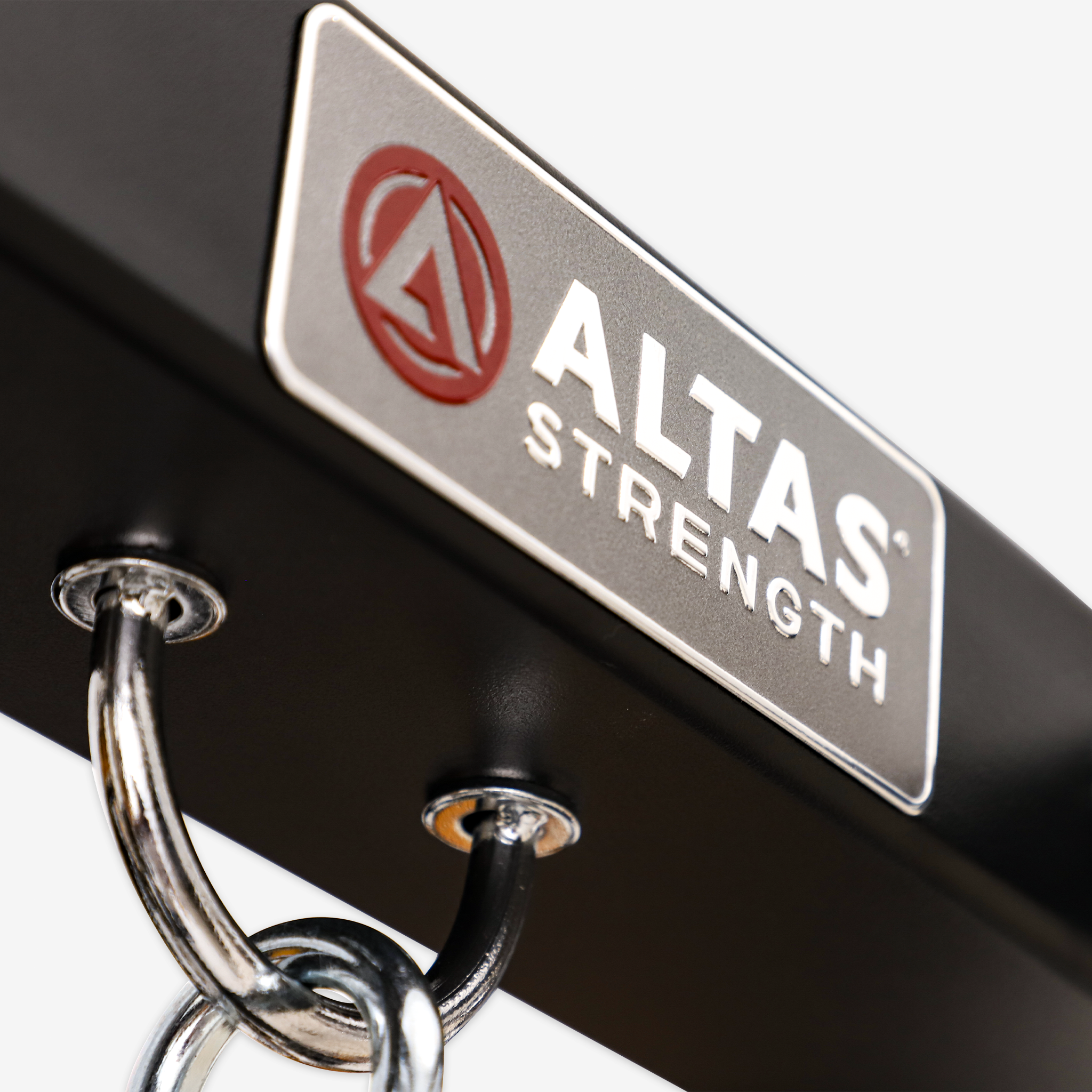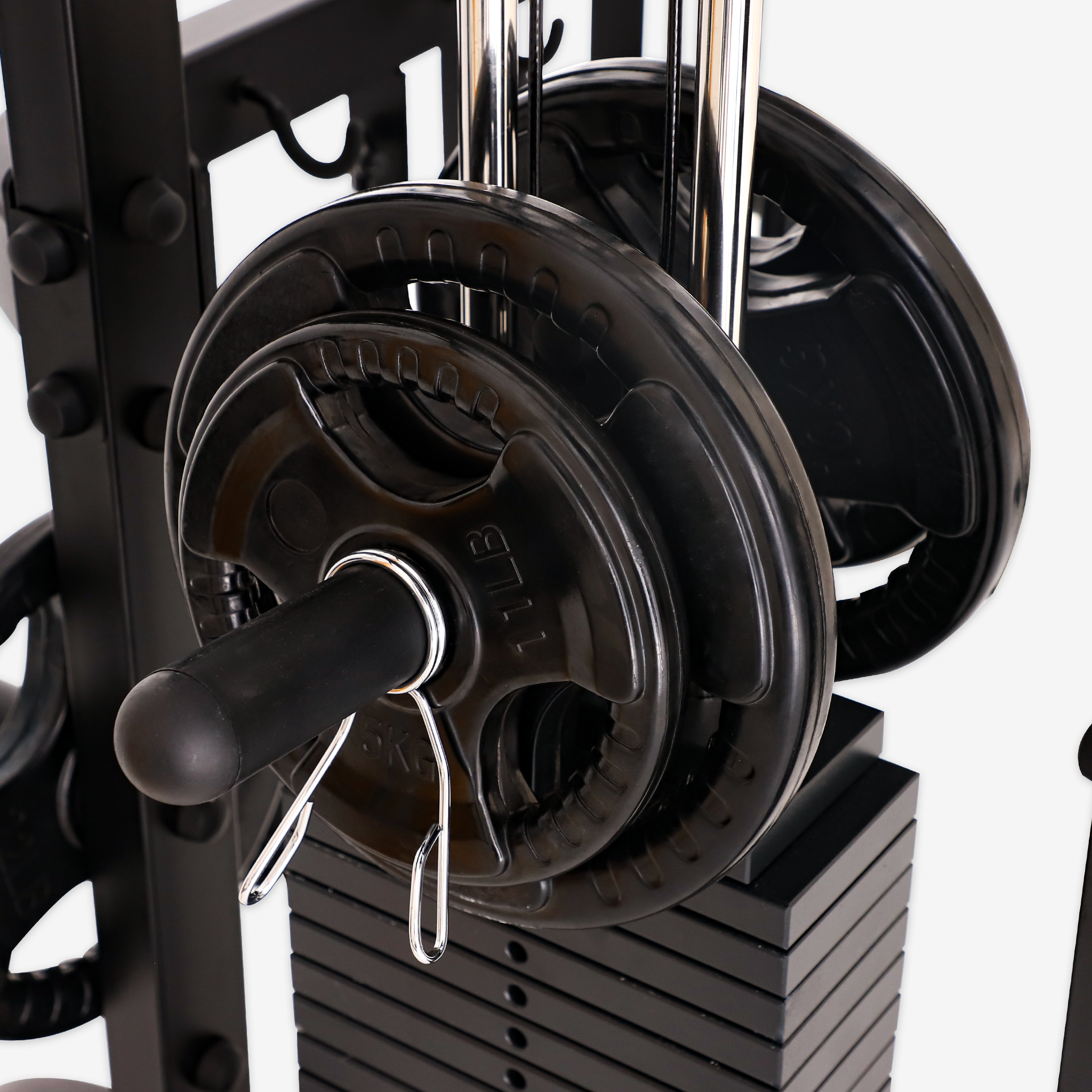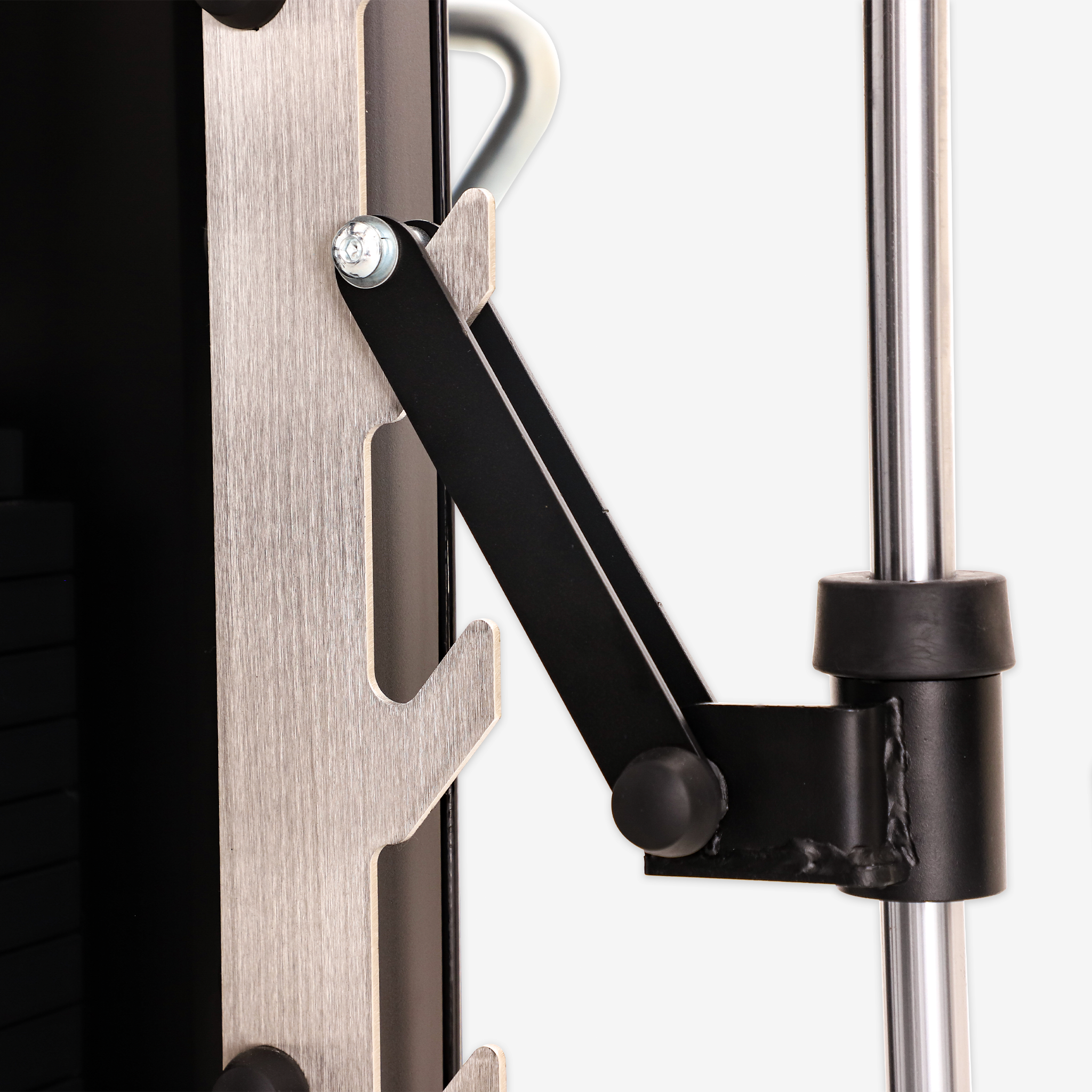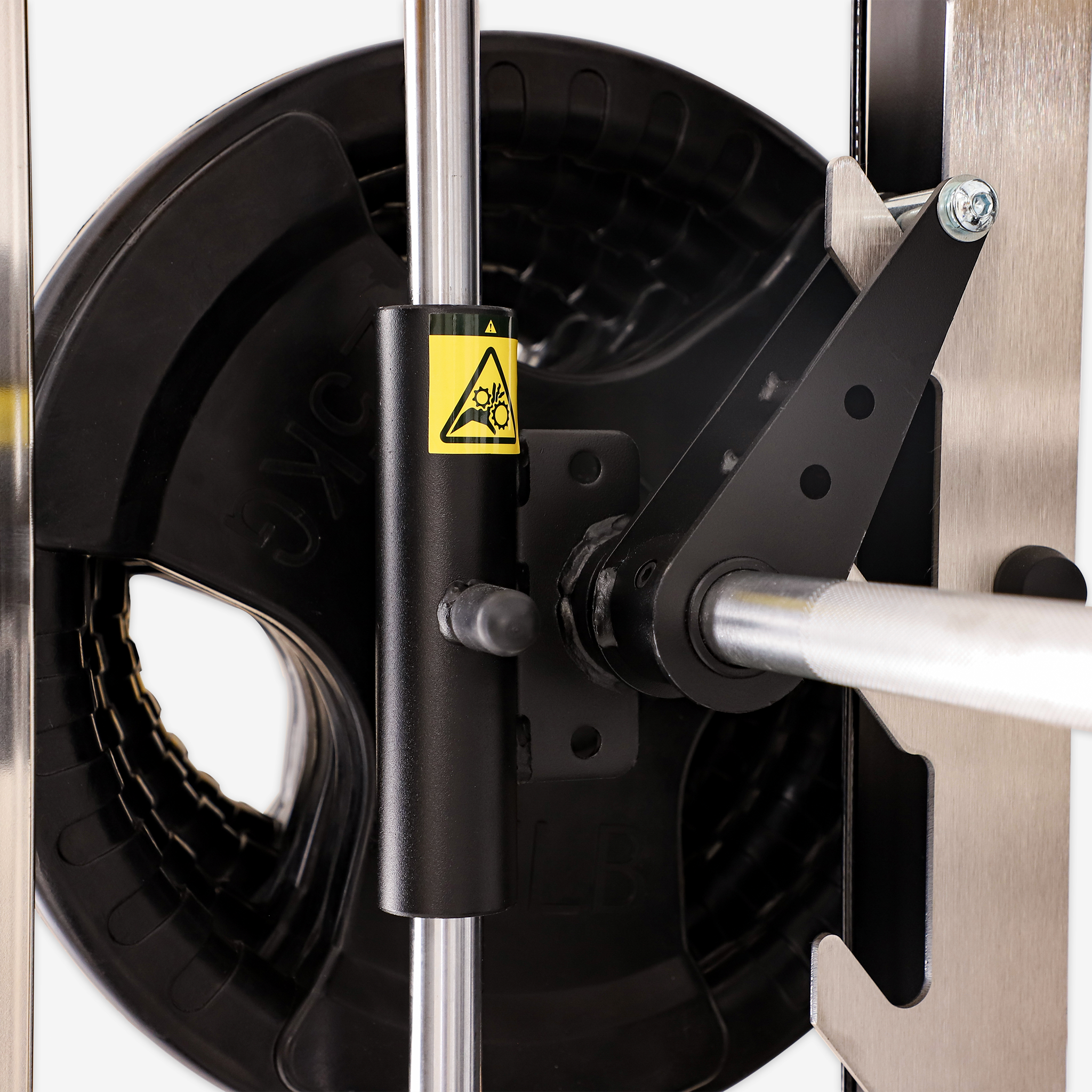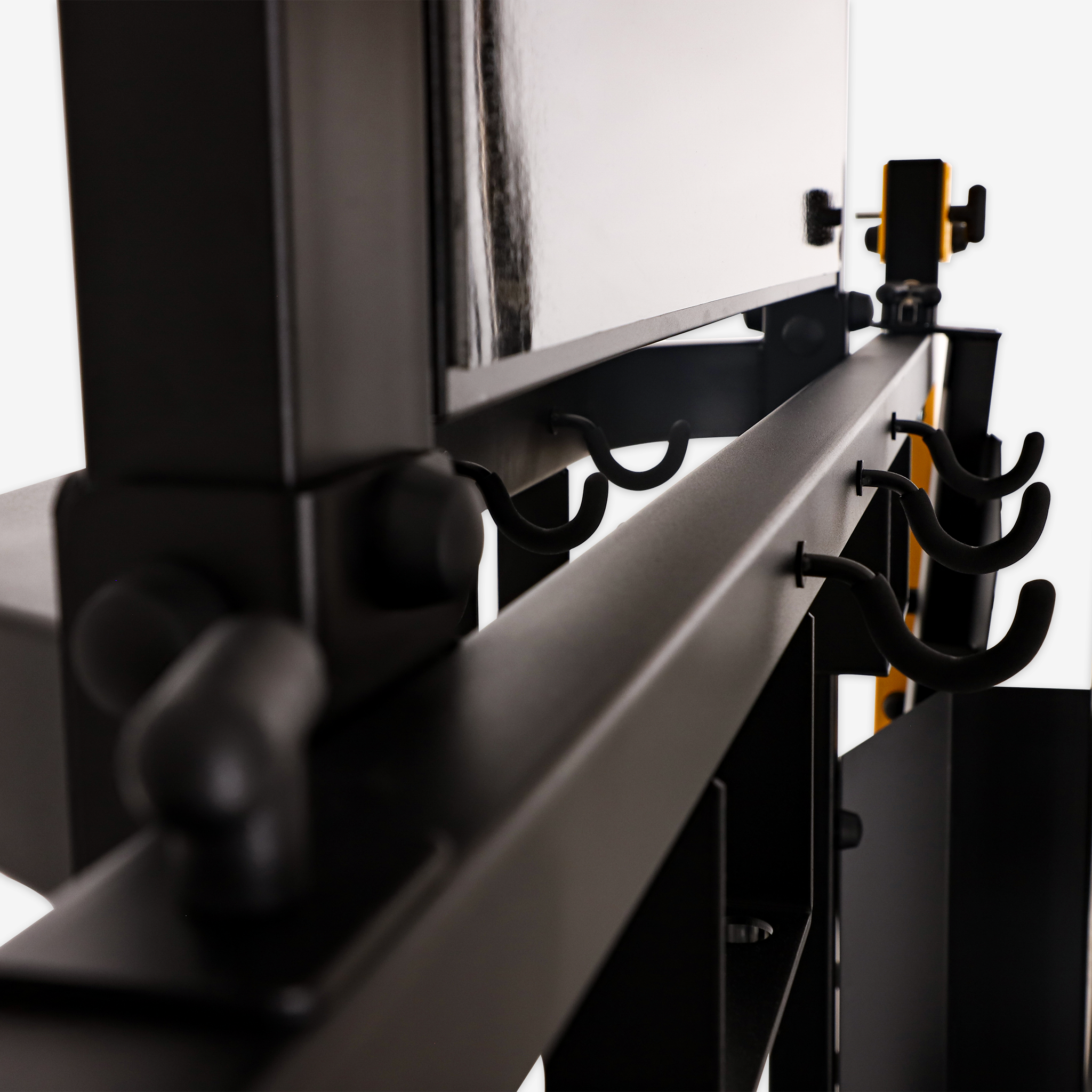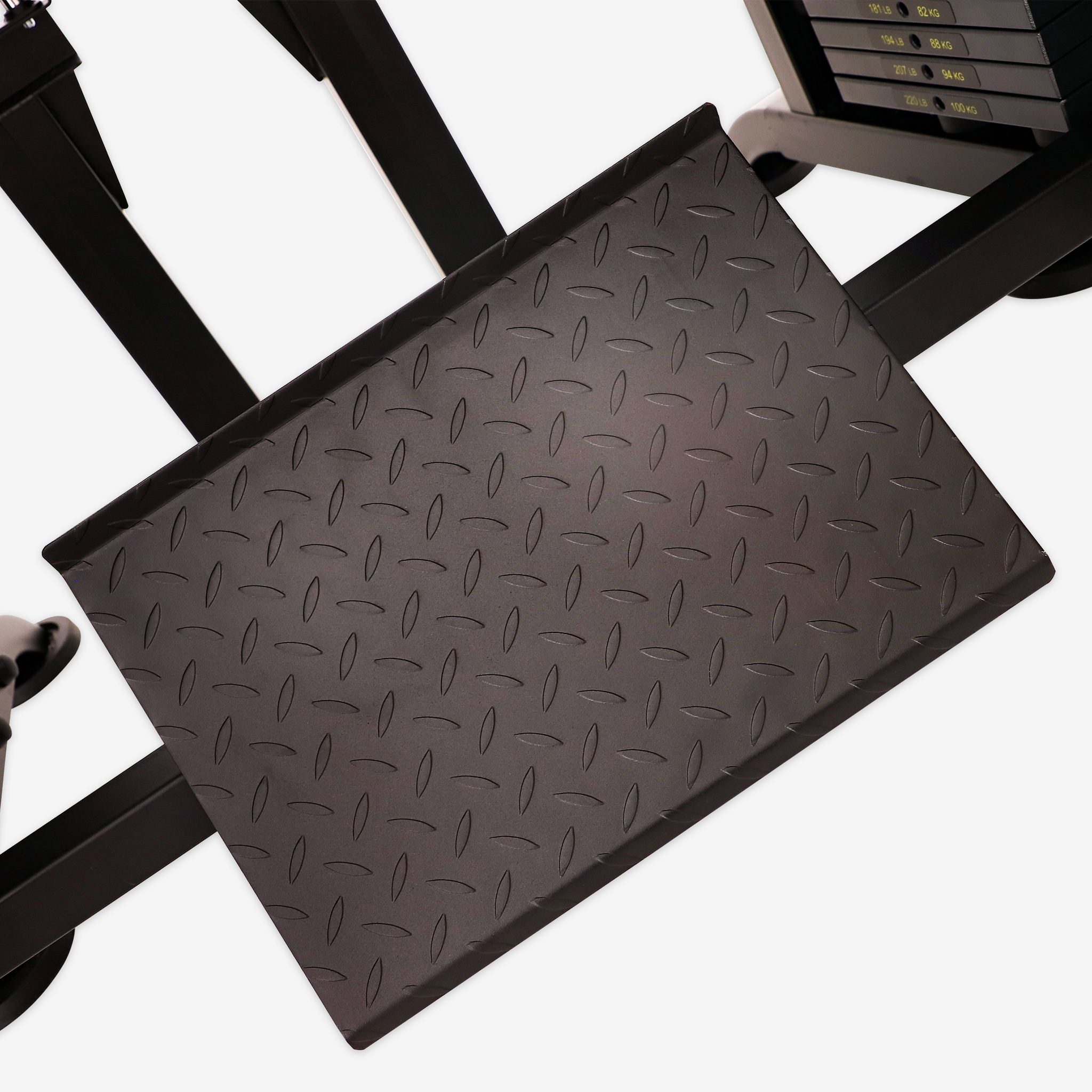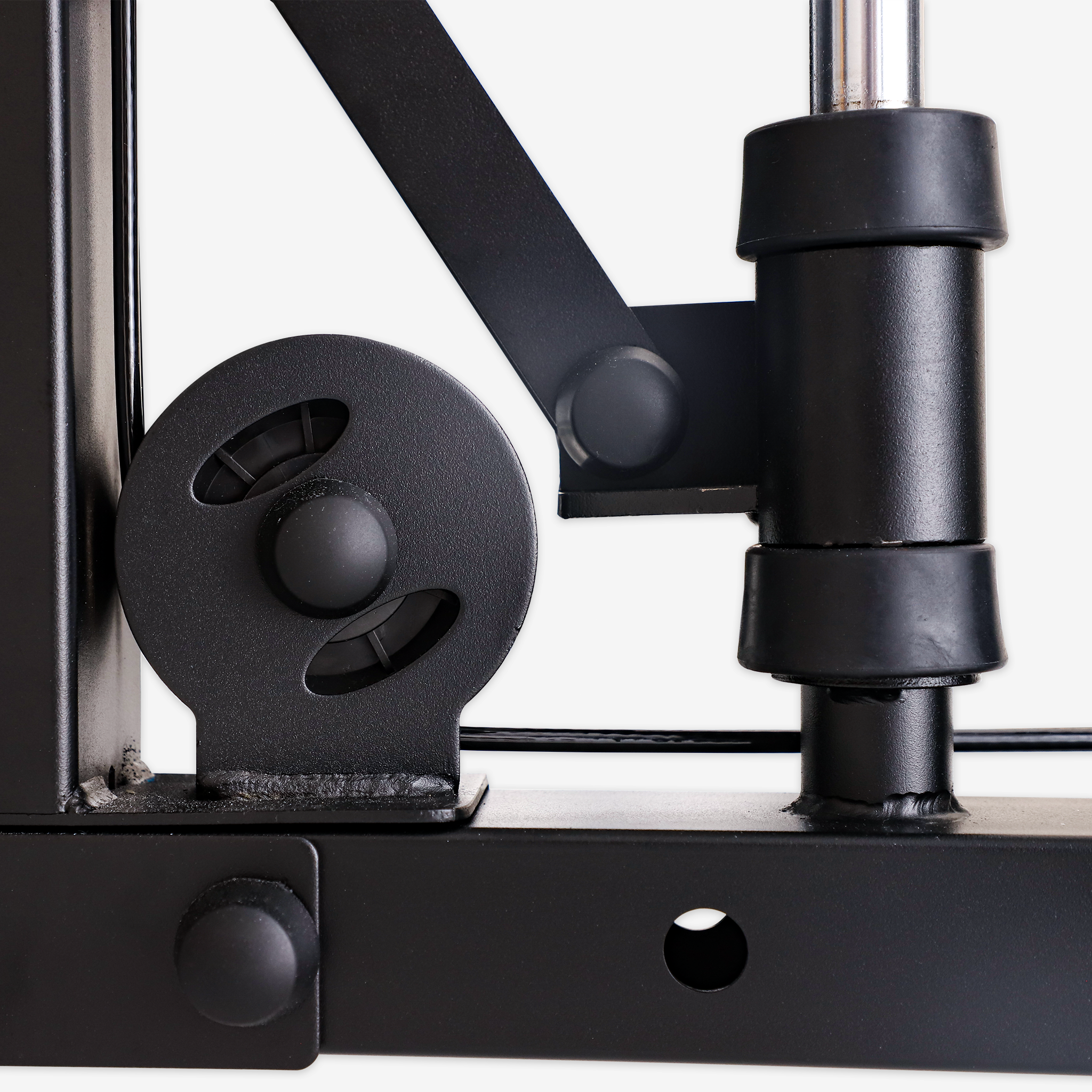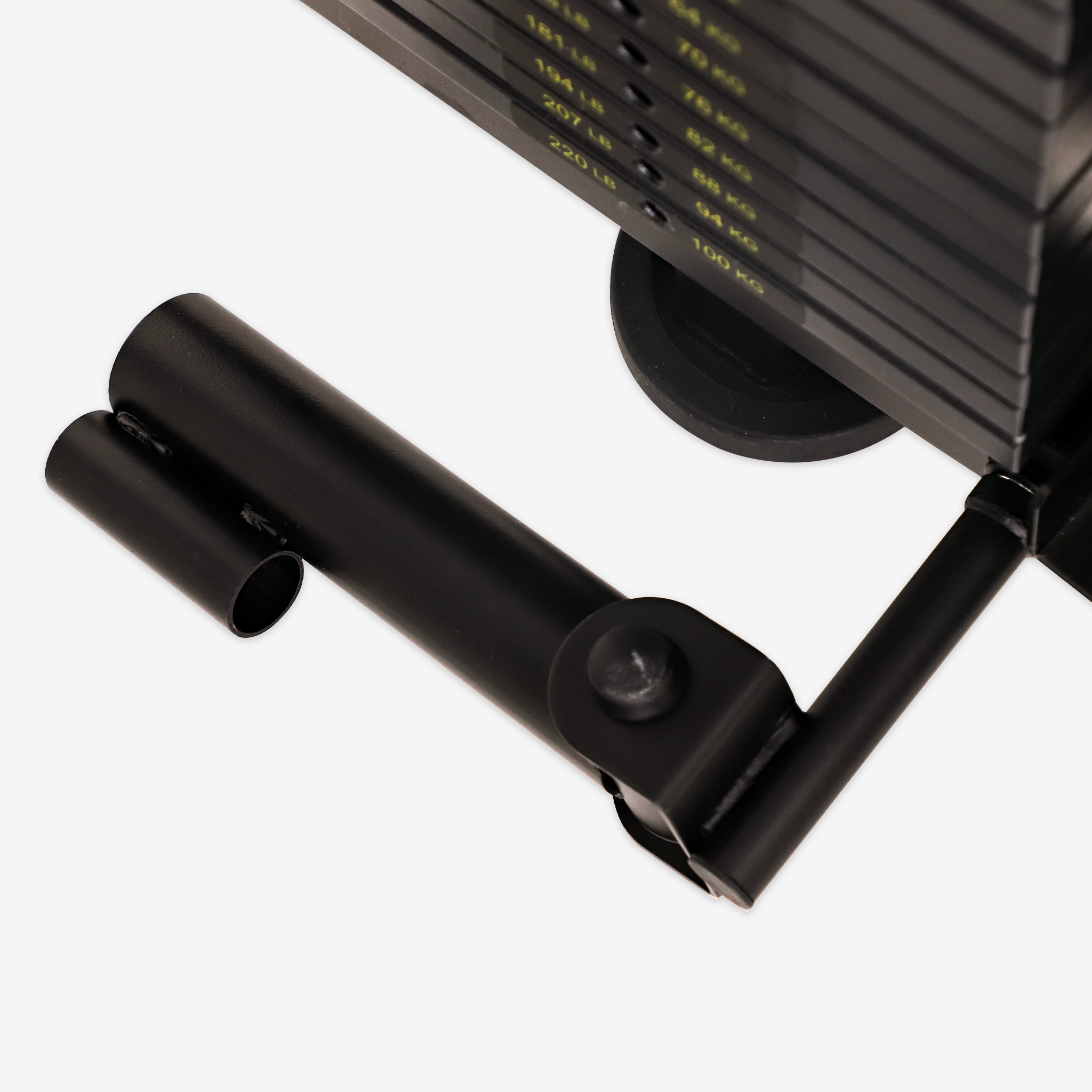Among the myriad strength training exercises, the squat is heralded as a quintessential movement for enhancing lower body strength and muscle mass. As demands for training efficacy escalate among practitioners, various squat variations have emerged to cater to diverse training needs. The angled Smith machine squat stands as one such efficacious training modality, replicating the lower limb mechanics akin to running, jumping, or sports movements through its inclined angle. Leveraging the stability inherent in the Smith machine, it enables novices to safely enhance lower body strength.
Advantages of Angled Smith Machine Squats:
-
Simulated Functional Movement Patterns:
- The angled Smith machine squat allows the trainee to perform squats on an inclined plane, replicating the angular dynamics of force transfer in actual movements such as jumping. This unbalanced plane training enhances the trainee's stability and efficiency in applying force in dynamic environments.
-
Security and Stability:
- The design of the Smith machine facilitates the vertical movement of the barbell, thereby mitigating the risk of injury from balance issues during the squatting process. This aspect holds particular significance for beginners as it reduces the likelihood of strains or sprains resulting from improper posture.
-
Enhanced Strength and Flexibility of the Hips, Knees, and Ankles:
- Conventional squats primarily target the gluteus maximus, quadriceps femoris, and hamstrings. In contrast, angled squats require excellent coordination and flexibility of the hips, knees, and ankles, thereby enhancing the functional kinetic chain of the entire lower limbs.
-
Adjustability:
- Most Smith machines are equipped with adjustable incline angles that can be tailored to suit the individual's physique, training objectives, and proficiency level.
Correct Techniques and Training Methodologies:
-
Starting Position:
- Adjust the angle of the Smith machine to suit your requirements, ensuring that your feet are firmly planted and shoulder-width apart. Place the barbell across the trapezius muscles at the back of your neck and stabilize your posture.
-
Descent Phase:
- Maintain an upright posture with the back straight, allowing the hips to move backwards first. Bend the knees accordingly until the thighs are parallel to the floor or slightly lower.
-
Ascending Phase:
- Elevate the chest, utilizing the strength of the legs and glutes to stand upright, maintaining a straight back while avoiding excessive arching.
-
Control the Movements:
- Throughout the entire process, ensure that actions are executed slowly and with precision, avoiding any forceful leverage or rebound that could lead to joint injury.
Training Program and Important Considerations:
-
Warm-up:
- Prior to engaging in intensive training, perform a thorough warm-up to activate the muscles and enhance the flexibility of the joints.
-
Progressive Load:
- As strength increases, gradually augment the incline angle and weight to consistently challenge the muscles and nervous system.
-
Diversity:
- In addition to the Bulgarian split squat, incorporate other squat variations such as the conventional squat and the single-leg squat to achieve a comprehensive lower-body workout.
-
Recovery:
- Squats are a high-intensity exercise; ensure ample recovery time to avoid overtraining and injuries.
The angled Smith machine squat is an efficient strength training method that combines the foundational benefits of squatting with the unique challenges presented by an inclined angle. It serves as an excellent option for those aiming to enhance lower body strength and stability. With appropriate technical adjustments and a well-structured training regimen, the angled squat can significantly advance an individual's athletic performance and muscle power.



